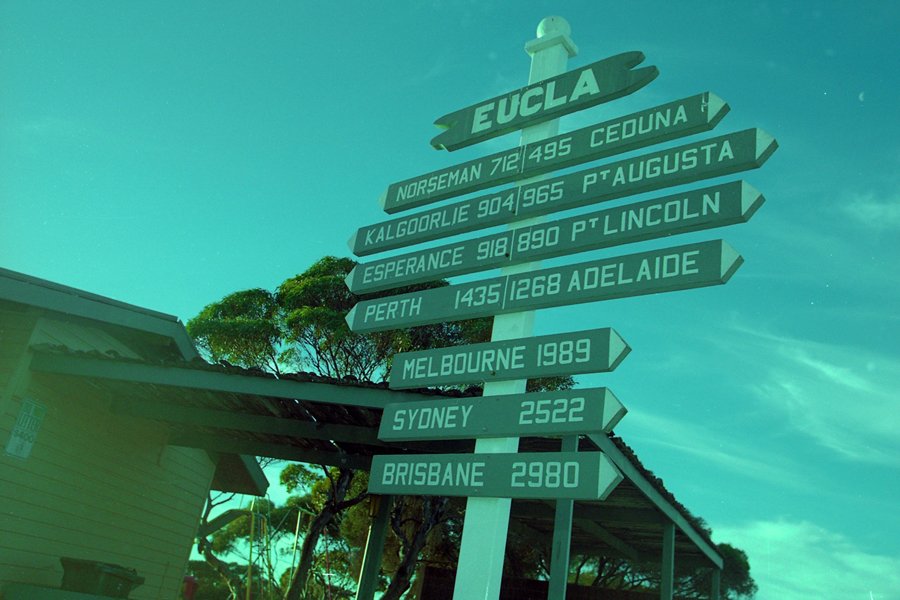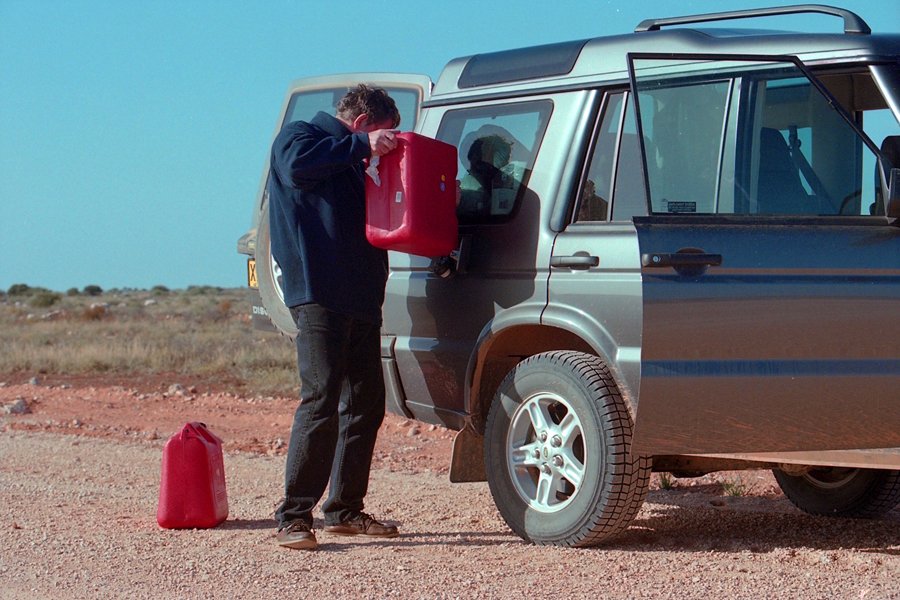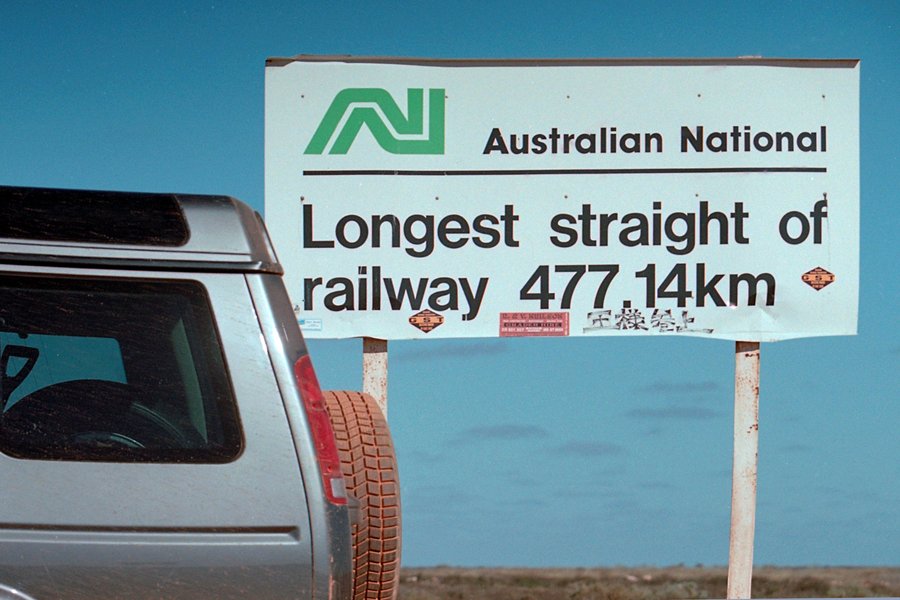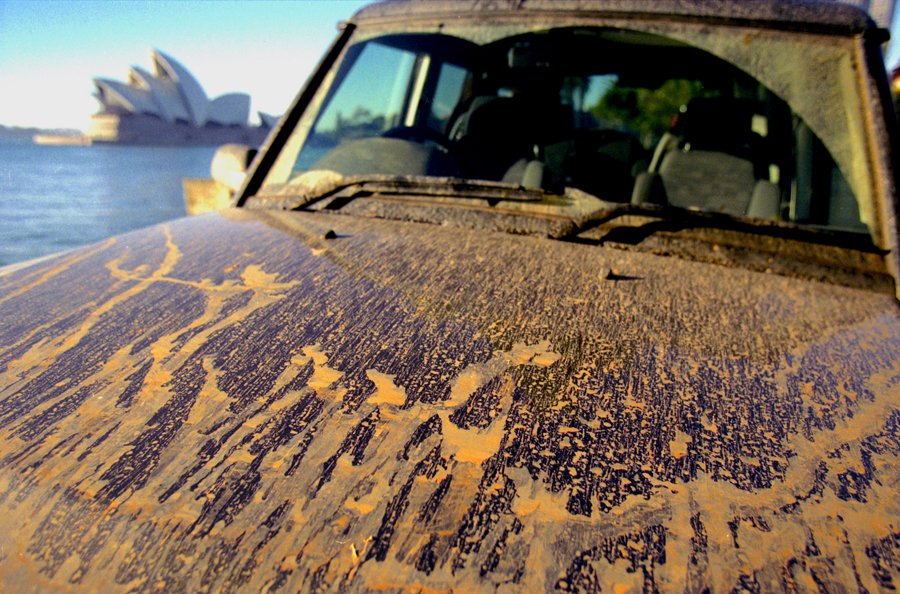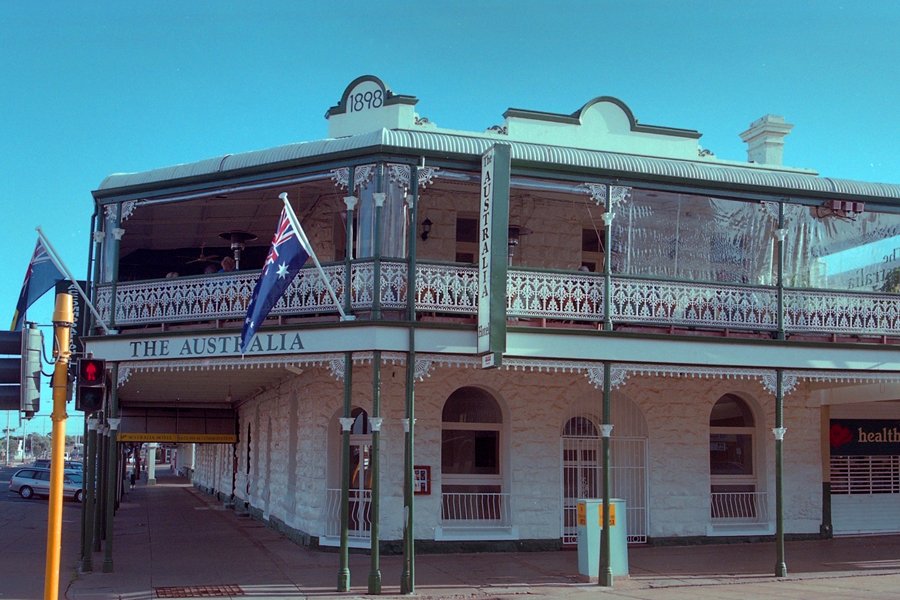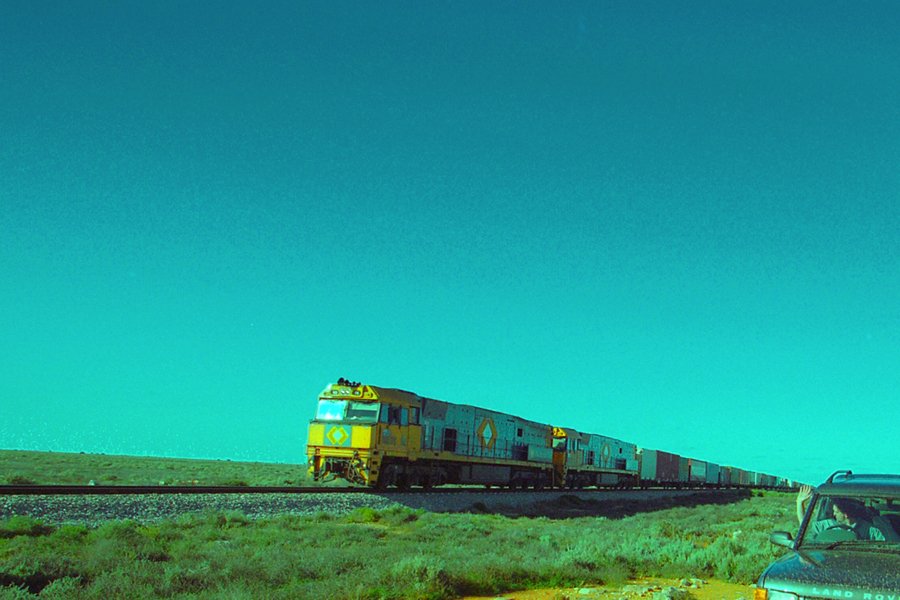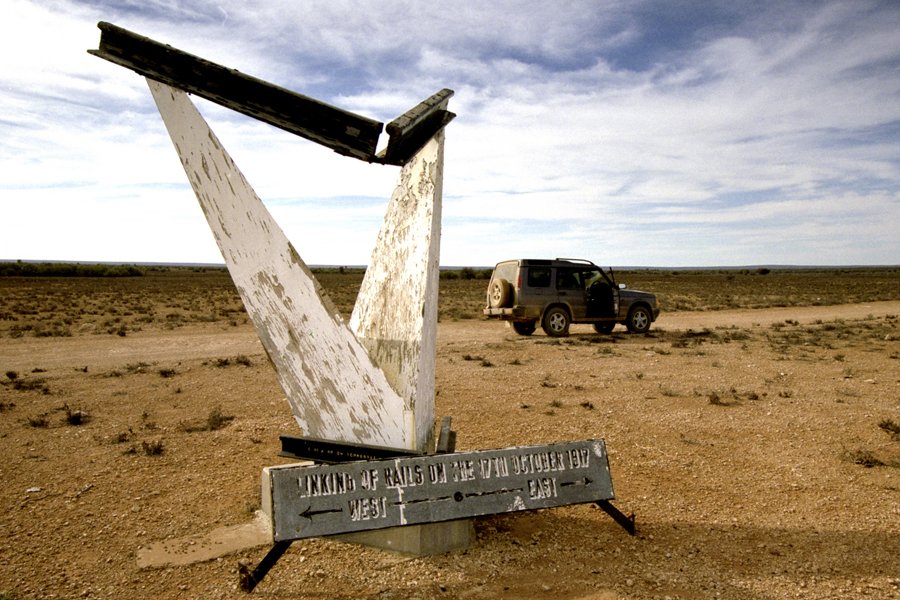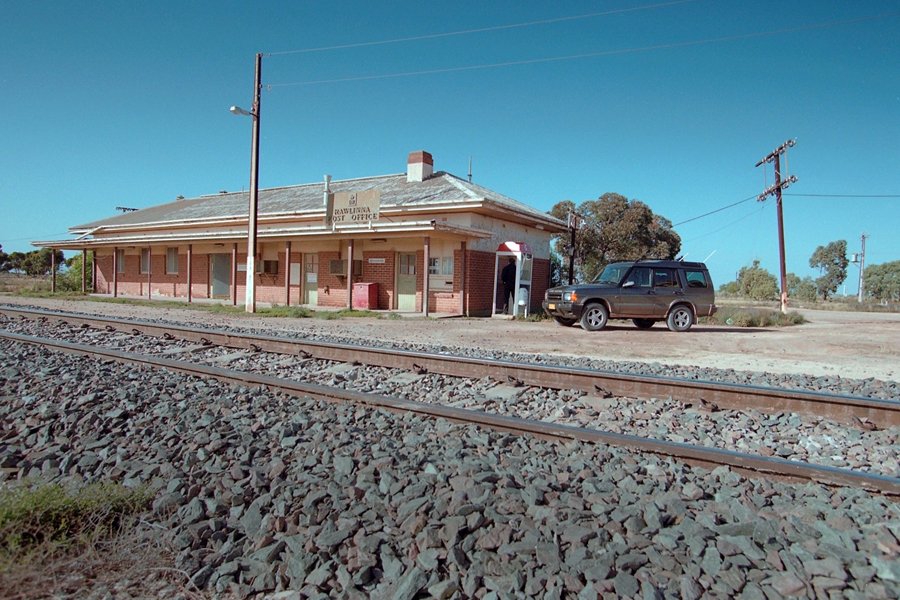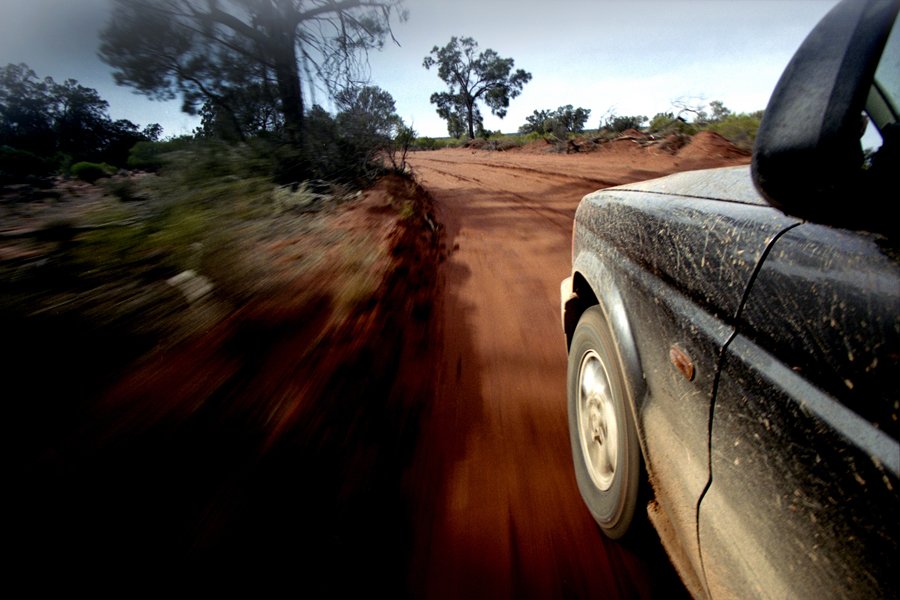Detour #95: Nullarbor Plain, Australia
Cutting a path parallel to the Indian-Pacific railway, Gavin Conway explores the vast emptiness of Australia’s Nullarbor Plain as he drives from Perth to Sydney.
The Nullarbor is the biggest single lump of limestone on the planet, covering a quarter-million square kilometres which is enough space to swallow England, The Netherlands, Belgium and Switzerland whole. With 7000 square kilometres left over.
If you run away from it to the north, you’ll stumble into the Great Victoria Desert. Head south and you’ll trip off jagged high cliffs and into the Southern Ocean. Look for shelter from some of the most intense sunlight on the planet and find even more hardship; ‘Nullarbor’ comes from the Latin ‘nullus arbor’ which means, simply, no trees. None.
The Eyre Highway runs east from Perth, hugging the coastline of the Great Australian Bight before beginning a gentle arc south toward Port Augusta and Adelaide beyond. At its road houses and petrol stations, you can buy bumper stickers of the “I survived the Nullarbor Plain” variety. All a bit disingenuous, really, because the Eyre Highway only picks at the fringes of the vast plain. And it has trees.
There is only one way to cross the real Nullarbor, and that is to catch a ride on the Indian-Pacific railway. Completed in 1969 after decades of interstate squabbling over the most appropriate gauge for the track, the Indian-Pacific forms an uninterrupted link between the west coast Indian Ocean and the east coast Pacific. It cuts through the heart of the Nullarbor Plain, running a good 120 to 140 kilometres north of the tame Eyre Highway.
And there it is in the fine detail of the map, right before my eyes. Another way. A faint broken line faithfully shadows the rail line, following it across the vast emptiness of the plain. The map legend describes the brown chicken-track lines as an unsealed minor track, suitable only for four-wheel drive vehicles. Local knowledge of the track is very patchy and I am warned that it may be virtually impassable in places.
And so I roll east out of Perth toward the gold mining town of Kalgoorlie, which sits on the outer edge of the Nullarbor. Once clear of the town, I’ll be facing nearly 1500 kilometres of dirt track.
The landscape begins to change as I leave behind the tall eucalyptus trees and gently undulating terrain that marks the edge of the Nullarbor. But I’m still on a working track; the only vehicle I will encounter enroute to Rawlinna thunders past, leaving a volcanic trail of thick, choking red dust. It’s a road train, a monumental collection of four massive trailers towed by a colossal American-style truck.
The road worsens, revealing what will become my most dangerous adversary. The limestone that underpins the Nullarbor scatters the trail with large rocks and small boulders. Worse, much worse, are the occasional shards of limestone that protrude discreetly from the road surface like unsheathed Bowie knives. Hit one of these at speed and it’ll destroy a tyre instantly. With such a vast distance to go, the two spares that I am carrying suddenly seem inadequate to the task.
I roll into Rawlinna in enveloping darkness, cruising quietly through the tiny settlement which is nothing more than a lonely scatter of bungalows. On the outskirts of town, I find a remote spot to camp down by the Dog Fence – this is the longest artificial barrier in the world, an incredible 5,400 kilometres and built solely to protect sheep from wild dingoes.
Under an impossibly huge night sky the temperature drops to near freezing as I take refuge inside the Discovery, bundled neatly into a hooded sleeping bag. I sleep fitfully, waking in terror to a roar that grows until it shakes the very ground underneath me but it’s just a freight train out there on the Indian-Pacific.
In the morning I awake to an audience of 15 kangaroos, lined up side by side to get a better look at me. They stare balefully at me and then at each other before bounding off along the Dog Fence. It’ll be a while before I fail to find these animals hysterically amusing.
But now, a decision is needed. I’ve emptied both reserve tanks into the Discovery’s main fuel tank and it’s less than three-quarter’s full. And the next stop along the track where I might get fuel is 250 kilometres down the line in Forrest. It has also been described as some of the toughest track I’ll face, with huge ruts, boulders and broken limestone.
Using the satellite phone, I make contact with the airfield at Forrest. Yes, they have some fuel I can buy. Hell, they’ll even cook me a steak if I get there early enough. Looking at the map, I give an ETA of about five hours. When she hears where we are, Yvonne Williamson, wife of the airfield’s keeper Max, goes a little quiet. “No, that’s a really rough road,” she warns. “You’ll be eight hours minimum. And watch your fuel.”
Nine hours later and my Land Rover has been punished beyond what I seriously believed it could take, pounded by holes deeper than they looked and ambushed by unseen rocks in the blonde grass that overgrows the track. In the dark, the sudden silhouettes of kangaroos and rabbits spook across the headlight beams. I’m down below a quarter of a tank and I can’t understand why I haven’t made Forrest yet. Even the track has petered out to nothing, leaving me to pick my own way across the scrub.
And then, out of the gloom, as suddenly as that, I roll up in front of Max and Yvonne’s veranda. Max had seen my lights bobbing in the dark from a long way off, and the steak that’s spitting and sizzling on the barbecue is meant for me. Max disappears, comes back a second later with a cold beer that is quite possibly the best I have ever tasted
The following morning, Max hand-pumps enough fuel into the Discovery to get me back down to the Eyre Highway, where I will buy extra fuel cans and supplies for the final big push across the plains. It’ll mean a 200 kilometre round trip, but it will also mean that I can drive out of the real Nullarbor under my own steam.
I’ve been underway for about an hour when, far on the horizon, I spot the dust trail of another vehicle approaching. This will only be the second vehicle I’ve seen in two long days of driving – and it’s only another Discovery
Caroline and Graham Chapman greet me as an old friend – you’re always happy to see another face out here – and Graham and I compare notes on our respective vehicles. This far from anywhere, your lives depend on the fitness of your vehicle. So they’re a pretty major part of any outback conversation.
We swap info about the road ahead and after long handshakes and backslaps, I roll out across the plain, heading due south after I pick up the dusty red track that’ll take me to fuel and provisions. This is the heart of the Nullarbor, a vast plain of low, saltbush scrub that runs out to a horizon that does not change, regardless of which direction you look. It is powerful and moving in its simplicity, in its thunderous great silence. Here, even the slamming of a car door is a sound that takes on dramatic significance.
I make the coast in time to witness a fiery red sunset over the plains behind me. At the Nullarbor Roadhouse, I stock up on provisions, purchase yet another reserve tank for fuel and talk to the locals about the last leg of the journey. They reckon it’ll be just about the toughest leg yet.
They’re wrong. So infrequent are trips up to the rail line from the Eyre Highway that the locals don’t realise that the rail company has graded a long stretch of the service road. To my huge relief, I find that I can maintain an 80kph cruise through the thick, red bulldust that covers the track.
Then I hit the tarmac that shadows the glistening rails of the Indian-Pacific, rolling steadily through Broken Hill – a sanitised and tour-guided ‘accessible outback’ – and on to the increasingly gentle, pastoral country that leads to the Blue Mountains and finally, to Sydney on the east coast.
The final odometer reading at Sydney harbour is 4157.8 kilometres. They have been some of the hardest and most memorable miles I’ve ever travelled in a vehicle. And some of the most beautiful.
Nullus Arbor. Who needs trees, anyway.
Words Gavin Conway Twitter | Instagram
Photography Ian Dawson
